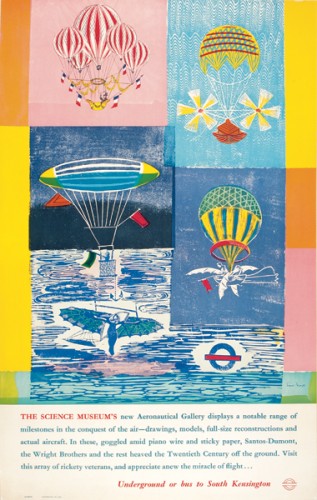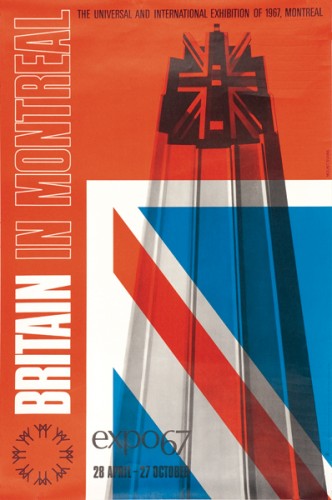I thought I’d said pretty much everything I could say about Sotherans by now, in particular about the unlikelihood of being able to sell posters at such prices in a world where, thanks to the internet, everyone should agree on what a poster is worth. But it seems that modern technology has made precisely no difference at all to their business model, because this year they have once again produced a new catalogue, and the prices are just as jaw-dropping as they have ever been.

Norman Wilkinson, 1930, £1,995 – sold
So far, so not news. But this set of posters is worth taking a look at, because it marks an interesting change in the focus of the company, and so perhaps also a movement in the market more generally.
It is true that they still begin with the traditional railway landscape/Terence Cuneo favourites that we have come to know, like this Somerset poster by Jack Merriott.

Jack Merriott, 1960, £1,500
I do also have to note that this Somerset British Railways Map is apparently £760, unbacked, mostly because we bought one for £16.99 on eBay a while back.

J P Sayers, 1937, £765
And then sold it for £56 a few years later. I thought we’d done well, but clearly not.
But there aren’t as many of these as you’d expect. Very soon the catalogue shifts into an entirely different gear, one which might be called cheerful British kitsch.

Anonymous,1961, £800
In fact a few pages in the catalogue look more like a romp through Quad Royal than an up-market poster sale.
There are some good posters in here – I did actually type great and then deleted it, because mostly they’re not. They’re bright, they’re very 1950s, but what they are not is classic graphic design (although I might just have to make an exception for a this stick of rock).

Bromfield, 1950, £685 – sold
What’s really interesting though is that almost all of them have sold, and for prices that they just wouldn’t reach anywhere else.

Anonymous, 1965 (??), £485
The interest in this style is not entirely a new thing. When I first started going to poster auctions in about 2002, Christies had just started selling these kinds of poster, and they were doing very well in the their auctions too. But when Christies introduced their new £800 minimum lot price, this rather ruled them out. Clearly though, as this catalogue shows, the demand for them hasn’t gone away.

Lander, 1962, £685 – sold
Sotherans could be accused of pushing it to the limit, mind you. As I’ve mentioned before, these two Harry Stevens posters are not exactly rare.

Harry Stevens, 1974, £85 – sold

Harry Stevens, 1974, £85 – sold
In fact they have been swilling all over eBay for some time. Right now you can buy a framed copy of the top poster for £21 should you wish, and a portrait version of the lower one for £23. Which does make me wonder whether Sotheran’s buyers are too foppish and tweedy to have come across the internet at all.
But it goes further. There are a slew of posters on there without much in the way of merit.

Rex Moreton, 1960, £195 – sold

Anonymous, c.1960, £125
They’ve sold too, when you’d struggle to get a tenner for them on eBay. Really, who are these people? And how can I sell them some posters?
To be fair, there are also one or two nice GPO posters in there too, like this Eric Fraser.

Eric Fraser, c.1930-40, £225
Along with one or two good LT ones too.

Peter Roberson, 1956, £500

Enid Marx, 1965, £500
Although this William Fenton has to be in the ‘stretching it to get a tenner on eBay’ category.

William Fenton, 1969, £250
While you’d have to pay me to take this one away.

Anonymous, 1970, £55
Worth noting too is this Mount Evans, which has to be one of the better pieces of post war design in the whole catalogue.

Mount/Evans, 1967, £350
The style is modern rather than kitsch, but it still represents the same movement away from landscapey railway posters and towards something more interesting (at least if you’re me).
So what does it all mean? My first guess would have been that the world is running out of railway posters and so dealers like Sotherans have been forced to diversify. But in fact, it’s the more modern posters which have been selling for them, leaving more traditional fare like the Somerset posters still for sale. So this must be what people, even the rareified breed who go to Sotherans want these days. Which is probably worth noting, not least because it gives the rest of us a good chance to do some upselling from eBay.
Now, I would send you off to the Sotherans catalogue to take a look at what’s sold for yourself. But literally while I was typing this post, they took that page down, although you can still see an online version of the print catalogue. So I think that more of the posters than I have listed are sold, but I’m not able to check that any more. They have, however, replaced it with a new set of posters for sale, including a very interesting set of GPO Savings posters. I’ll take a proper look at them (and their prices) soon, but if you want to take a peek before then, you can find them here.

The prices look high to those of us who scour ebay but are maybe not so expensive when you consider that at the auction you can get the poster there an then rather than having to spend hours trawling the internet/ebay. This set up works in the antique business all the time whereby “finders’ go out in the world and pick up items often very cheaply before passing them on to dealers who in turn pass them on to shops or auction houses before finally they reach the buyer. I’m guessing the wealthy can afford both to pay the prices at auction and can afford not to spend their time at their computer screens when they could be enjoying a gorgeous lunch somewhere.
You are absolutely right.
What I was pondering in the previous post about Sotherans last year, was whether the availability of price info on the internet would lead to a flattening of price differences, with higher prices at small provincial auctions (because people like me now have access to them online) and lower prices at the dealers because people have more information about past auction results.
This is what ought to happen in the perfect economic model of rational comsumers which of course bears no resemblance to real life. In particular, I think my love for a bargain causes me to over-estimate the importance of this to everyone else.
But I do still think that some of those tube posters are chronically over valued.